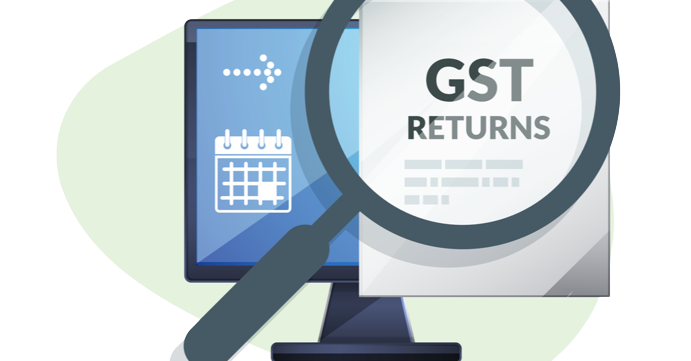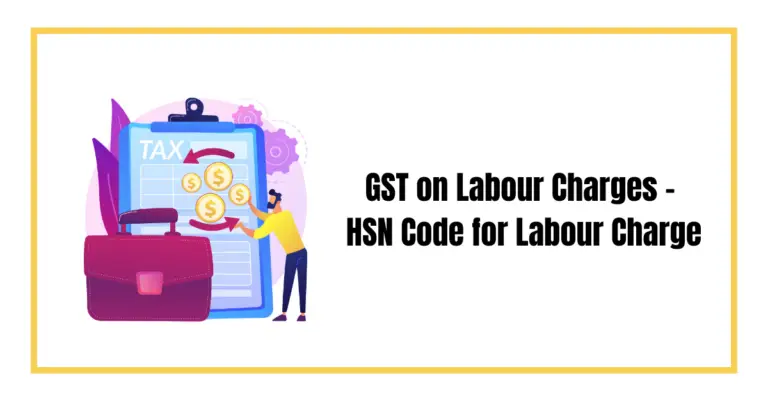Read this blog to know about GSTR-4 filing, format, eligibility criteria and the rules related to the same in India.
GST came into existence to enhance uniformity and transparency in taxation, and its influences have been nothing brief of outstanding. GST return form filing and registration procedures have made paying taxes easier than ever, positively impacting the business sector. Also, calculating taxes is incredibly easy now, as you should know only about calculating GSTR-4. The calculation is simple because this comprehensive tax has dissolved various other forms. As a result, there are least chances of making any mistakes too.
Several forms have been generated to assist the taxpayer persons in acknowledging with requirements of GST. Among those forms, one is GSTR-4 form.
Understanding form GSTR 4
Each taxpayer who has to accept the Composition Scheme under the GST authority is required to fill out the GSTR 4. This type of composition permits you to pay GST as per your fixed turnover rate rather than of formal GST deadlines. The normal taxpayer pays 3 returns monthly, while the composition taxpayer has to pay only one GSTR 4. The GSTR 4 form must be documented quarterly, on the 18th date of the previous month in the quarter. Moreover, under this composition scheme, a taxpayer has to file an annual return GSTR-9A by or before 31st December in the prevailing financial year.
Who should file GSTR-4?
A taxpayer who had chosen the Composition Scheme is in needs to file GSTR-4. It also encompasses the special composition scheme instructed for the service providers vide notification number 2/2019 on 7th March 2020, the w.e.f financial year 2019-20.
How to revise GSTR-4?
After filing GSTR 4 on the GSTN portal, it can not be revised or changed.
Eligibility Criteria for GST’s Composition Scheme
There are various points you should know about whether you are eligible for the Composition Scheme of GST. These points are as:
- The business’s turnover should be less than rupees 1 crore for this scheme. However, if you inhabit the Northeastern States or Himachal Pradesh, your turnover must be less than 75 lakh rupees. You should suppose all businesses enrolled under the same PAN to choose this composition scheme.
- To calculate your turnover, all the businesses enrolled under the same PAN should be considered; otherwise, you are not eligible for the composition scheme.
- All report boards at the business address should mention ‘composition taxable person. This phrase should be displayed on every bill you are issuing. If you are a goods supplier, you can give services only up to a maximum of 5 lakh rupees.
- Businesses which involve intra-state allowance of goods are eligible for the composition scheme.
- Collection of composition tax and input tax credit claim is not allowed for a dealer.
However, distinct commodities cannot choose the composition scheme. The catalog of limited commodities includes:
- A legal or non-resident taxable individual
- Service providers
- non-taxable goods supplier
- Any supplier other than those related to restaurant businesses
- GST-exempted goods Supplier
- Any enterprise supplying goods employing an e-commerce operator, ice-cream factories and tobacco and paan masala manufacturers
- inter-state goods Supplier
How to file GSTR 4 online?
The GSTR 4 returns can be filed online similarly by which other GSTR forms like GSTR 1 and GSTR 3B are filed. This filing can be done on the official online GST portal via these steps:
- On the GST portal, log in with your email address and password.
- Click on the option ‘services,’ then choose ‘Returns’ and select ‘Returns Dashboard.’
- Select your financial year and time of filing.
- Click on the option ‘Prepare Online’ under ‘Quarterly Return GSTR 4.’
- By doing so, there will come a list of questions to display the appropriate domains of GSTR. You must answer them by clicking on the yes or no option. Then click on the ‘Next’ option.
- Point out that only categories for which you opt ‘yes’ option get displayed. In each section, put the relevant details for the favorable tax period.
- Click on the option ‘preview’ to check the submitted details. Now you can download a pdf of your submitted details.
- ‘Proceed to File’ will be displayed on your screen; click on it to proceed with tax calculation, late fee and interest.
- Click Table 10 and 11 for the payment of tax, late fee and interest.
- You can file your GSTR with either of these two choices. ‘File GSTR with Electronic Verification Code (EVC) or File GSTR 4 with Digital Signature Certificate Online (DSC)’.
- Once these things get completed, a success message will be visible on your screen along with Acknowledgement Reference Number (ARN). Also, you will get a success message on your enrolled email and mobile number, and your filing status shifts to ‘Filed.’
You can similarly file GST return online utilizing different software by Introducing data quickly to the applicable sections.
You should know these things while Filing GSTR 4 online:
Here are some cases to know while filing your GSTR 4.
- If you have not filed your GSTR by the prescribed due date, you must pay the late fee.
- In case you missed filing your GSTR 4 for a specific quarter, you can not file your GSTR 4 for the next quarter.
- Third-party software or apps can be used to file your GSTR 4.
- You should be highly focused while filing details of your GSTR 4 as you can not get a second chance to revise or edit some changes. However, you can make revisions when filing your GSTR 4 for the next quarter.
Late Fees and Penalty
According to the recent update, a late fee of 50 rupees is charged daily up to an upper limit of Rs. 2,000. The maximum late fee is 500 rupees in cases with no tax liability.
Previously, if the GSTR 4 was not filed on time, the late fee of 200 rupees was charged daily. The ultimate late fee that can be charged is not more than Rs. 5000.
Before registering for GST, Calculate GST amount that needs to be paid using our GST calculator.
What is the GSTR 4 format?
You are supposed to reveal the total value of your allowances in the GSTR 4, and this will be certain of the time for which you are filing your GSTR 4. Moreover, you have to pay the tax at the composition rate. You will also have to add the purchase details at the invoice level for those purchases, which are typical for taxpayers. The purchase circumstances are automatically revised in GSTR 4 A through the already fulfilled GSTR 1 form.
Here are the 13 elements that make up the GSTR-4 form.
- taxpayers’ name: this is auto-populated as soon as you sign in to the portal.
- The GSTIN of the individual documenting the return. This is auto-populated.
- Details of interior allowances or inward supply, comprising those competent for a reverse payment, are also a portion of GSTR components.
- Documents of the whole turnover of the last financial year are required to be refreshed once by you. Afterward, this region will be automatically auto-populated with the closing balance for every accomplishing form.
Inward supply details comprise the following:
- Incoming supplies from authorized suppliers (attracting reverse charge)
- Incoming supplies from authorized suppliers (excluding reverse charge)
- supplies from unlisted and unauthorized individuals
- Import of assistance (liable to reverse charge)
- Taxes on various supplies earned, comprising goods and advanced, during the tax duration you filed the returns.
- Any modifications to outward supplies feature illustrated in last GSTR-4 returns for ahead tax periods.
- Any corrections to inward supply details, encompassing debit and credit notes, asserted in returns for the last tax period.
- Any advance payment you have made for reverse charge supplies is to be mentioned in this area. Moreover, any taxes you have paid in advance but get the invoice now is to be mentioned in the list.
- Total tax payment and liability segregation under CGST, UTGST, IGST, SGST and cess.
- Any TDS received: This section needs details like the TDS amount, GSTIN of the deductor, and the entire invoice value.
- In case you have paid an extra tax, you can claim via this section. You can claim compensation under interest, tax, fees, penalty, etc.
- Any paid or payable interest along with late fees. The details of the same should be included.
- All payments are made through cash, including interest, tax and late fees, and should be enlisted here.
Each GST registered person must do GSTR 2 filing as a mandatory purchase return. It is necessary, among other things, to enter details about the inward supplies that one was a party to when filling out the GSTR 2 Return document.
Who Can File Nil under Form GSTR4?
In the context of Goods and Services Tax (GST) in India, GSTR-4 is an annual return that must be filed by taxpayers who have opted for the Composition Scheme. The Composition Scheme is a simplified tax scheme for small businesses, where taxpayers are taxed at a fixed rate on their turnover and are not required to maintain detailed records of every transaction.
Key points to note regarding filing Nil under GSTR-4:
Composition Scheme Eligibility: To file Nil GSTR-4, the taxpayer must first be eligible for the Composition Scheme. Typically, businesses with an annual turnover below a certain threshold are eligible.
No Outward Supplies: Nil GSTR-4 is applicable when there are no outward supplies made during the quarter. In other words, the business did not sell any goods or services during that period.
No Tax Liability: Since there are no sales, there is no tax liability to report. Hence, a Nil return is filed to indicate that there is no tax payable.
Filing Deadline: Even if there are no transactions, businesses under the Composition Scheme are required to file their GSTR-4 returns by the due date specified by the tax authorities.
Compliance: It’s important for eligible taxpayers to maintain compliance by filing Nil returns on time, even if they have no sales, to avoid penalties and remain in good standing with the tax authorities.
FAQs on GSTR 4 late fee:
What is GSTR-4?
GSTR-4 is an annual return form that certain taxpayers registered under the GST composition scheme in India need to file. It includes details of their turnover, tax liability, and composition scheme-related information.
How to File GSTR 4 Online?
GSTR-4 can be filed online through the GST portal by logging in and providing the required details. The process typically involves providing turnover details and tax payment information.
Who Should File the GSTR 4 Annual Return Form?
Taxpayers who are registered under the GST composition scheme, which is designed for small businesses with a lower annual turnover, should file the GSTR-4 annual return form.
When is GSTR-4 due?
GSTR 4 should be submitted annually, and the deadline for its submission is April 30th of the subsequent financial year.
Who should file GSTR-4?
GSTR-4 should be filed by taxpayers registered under the GST composition scheme, including small businesses with an annual turnover below a specified limit.
How to revise GSTR-4?
GSTR-4 is the GST return that composition taxpayers are required to submit on an annual basis starting from the financial year 2019-2020. It's important to note that once this return is filed, it cannot be amended, and any delay beyond the due date may result in the imposition of a late fee.
Is GSTR 4 filing compulsory?
Yes, for businesses registered under the GST composition scheme, filing GSTR-4 is compulsory. Failure to do so could lead to penalties and legal consequences.
What is the turnover limit for GSTR-4?
Businesses with an annual turnover of up to ₹ 1.5 crores were eligible to opt for the GST composition scheme and file GSTR-4. However, GST rules and limits may change, so it's essential to check the latest threshold limits for eligibility.
Conclusion
Every eligible person was paying the tax in one way or another. Even some persons experience it very tough to pay the tax. Also, some people were paying their taxes only for some things while denying for others. Keeping that thing in mind, the government has considered the GST. GST has made it easy for everyone to pay the tax very comfortably. Also, GST has made transparency in tax payments. Various forms of GST have been created for taxpayers. Regarding the GSTR-4, which is also a form of GST: https://www.gst.gov.in/, you can get more information on Vakilsearch, which will help you understand every point.










